Banks and Banks (1995) define multicultural education as “[…] equal educational opportunities for students from diverse racial, ethnic, social-class, and cultural groups.” But creating equal opportunities in education isn’t as simple as making sure every child gets a seat in a classroom. If you’re planning to become a teacher or are getting ready to advance your degree in education, here are 3 reasons you will want to make sure multicultural education coursework is a part of the program you enroll in.
Today, educators are expected to be able to
- make subject matter culturally relevant
- include students from diverse groups and backgrounds
- help students examine personal biases that may affect learning
A good foundation in multicultural education can help. Here are some examples of how:
1. Multiculturalism allows us to examine bias
National Board Certified Teacher and Associate Professor at the UH Mānoa College of Education Dr. Cristy Kessler shares how this type of education helps students broaden their view:
"The significance of multicultural education is that it gives individuals the opportunity to examine their own social and cultural biases, break down those biases, and change their perspective within their own setting."
When a teacher is prepared to include differing viewpoints and philosophy in the curriculum, her students can experience place and perspective at the same time, giving them a broader view of the world, in terms that make sense to them locally.

Disability and Inclusion
While we typically think social and cultural biases are limited to race and ethnicity, they are not. They include the way students view people with disabilities as well. Educators want to also be prepared to "counter negative perceptions of disability in the classroom” as well as consider ways to provide for “collaboration, access, and procurement [...] while empower[ing] individuals with disabilities [and creating] conditions for self-advocacy and inclusion [...].”1 If you are already an educator, you could consider professional development coursework that addresses issues of inclusion and provides access to current research on what is working for people with disabilities. If the study of disability is brand new to you, consider an introductory course, such as the Introduction to Disability and Diversity Studies.
.
 2. Post-colonialism is here to stay
2. Post-colonialism is here to stay
Through travel and research, educators like Chiara Logli are able to bring a world of experience to the teacher education programs they serve. As colonialism becomes a part of the past, there is a great need to recognize, understand and integrate indigenous knowledge, practices and values into the classroom. Programs that offer educators the opportunity to study and teach from their own and others’ viewpoints are crucial as we transition to a post-colonial world.
For example, in the colonial world, most industrialized nations held the viewpoint that their way of seeing the world was the “right” way. Educators who understand post-colonialism are willing to embrace different points of view and help students appreciate their value. Did any of the classes you had in high school, college or your teacher education program include a reading of Lao Zi? Should they have? How might such a reading challenge the thinking of future educators and better prepare them to present differing points of view to their students? Leaders in education who want to understand the foundations of education are asking questions like this and doing the research needed to answer them.
3. Peace can partner with diversity
Banks further defines one of the most important goals of multicultural education as “help[ing] all students to acquire the knowledge, attitudes, and skills needed to function effectively in a pluralistic democratic society and to interact, negotiate, and communicate with peoples from diverse groups in order to create a civic and moral community that works for the common good." We may not initially think of education as a path to peace, but teacher training programs can prepare educators to deliver curriculum that supports the cause of peace through the tolerance and understanding from a cultural perspective.
Colleges often seek to prepare educators at all levels to contribute to a just, diverse, and democratic society. Many universities conducts research in peace education in K-12 as well as hosting regular events which explore the topic of peace as it relates to education and educators. Consider this abstract from the Comparative and International Education Society 55th Annual Conference in May of 2011. Dr. Lum’s research seeks, among other things, to “[clear] a pathway for discussion of an emerging paradigmatic shift sometimes labeled as 'new age' that has yet to make an impact in educational theory/philosophy, least of all educational practice at the classroom level."2 While there is much work to be done on this front, multicultural education can be a practical means of promoting peace and the acceptance of diversity at the classroom level today.
Keep Learning
If these subjects and others relevant to multicultural education interest you, consider enrolling in a course similar to Educational Foundations 630 Cultural Diversity and Education which examines issues, theories, perspectives and practices in multicultural education and promotes awareness, encourages knowledgeable reflection and develops skills necessary for multicultural practitioners.
Or, if you’re ready to get started on an advanced degree, find a college with a strong program similar to those offered at the UH Mānoa’s College of Education. Degrees that would provide a good background in multicultural education include:
And for greater focus on disability studies:
Want to learn more about multicultural education? This link provides a treasure trove of suggested reading on the topic!
Have questions about a program that would be a good fit for you?
References:
1. Navigating the currents of change: technology, inclusion, and access for people with disabilities in the Pacific. Katherine T. Ratliffe, Kavita Rao, James R. Skouge, Joakim Peter, Information Technology for Development. Vol. 18, Iss. 3, 2012
2. https://coe.hawaii.edu/research/publication/10106012









